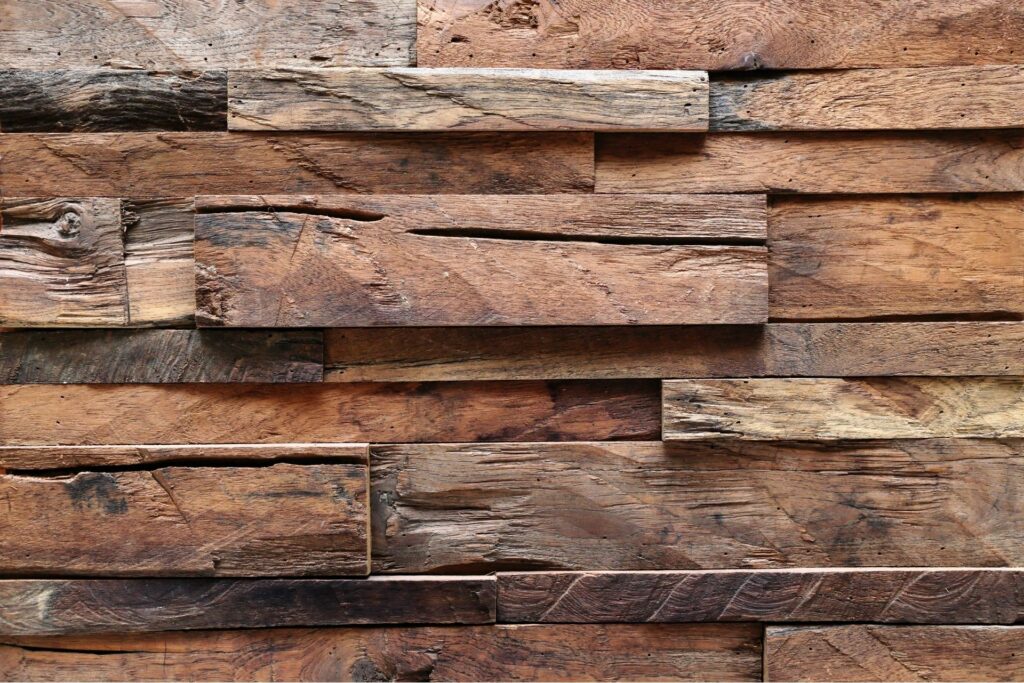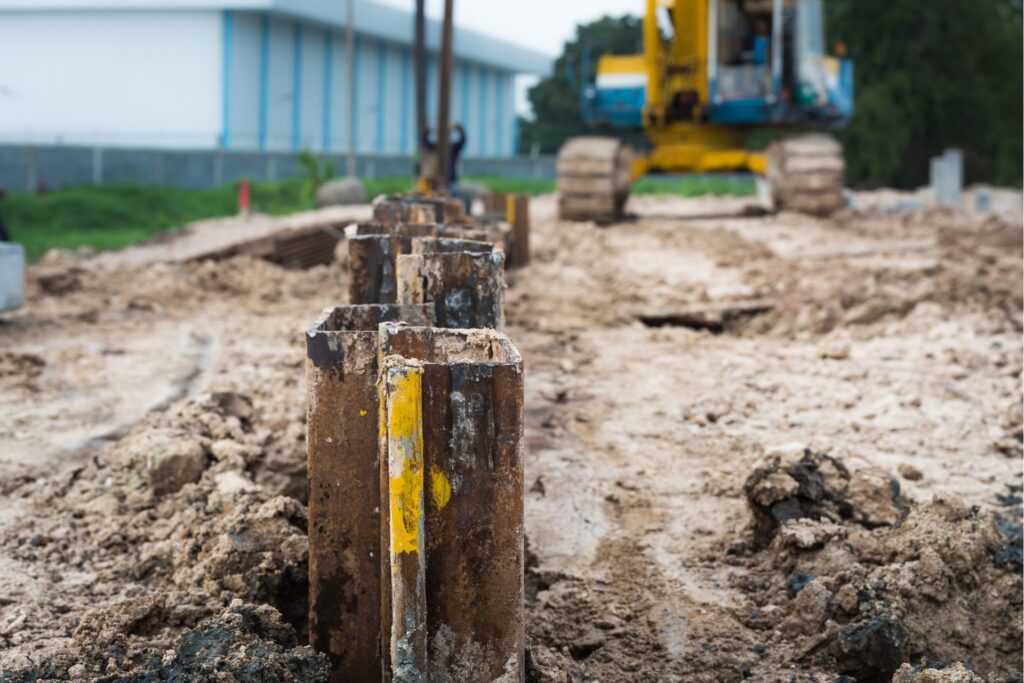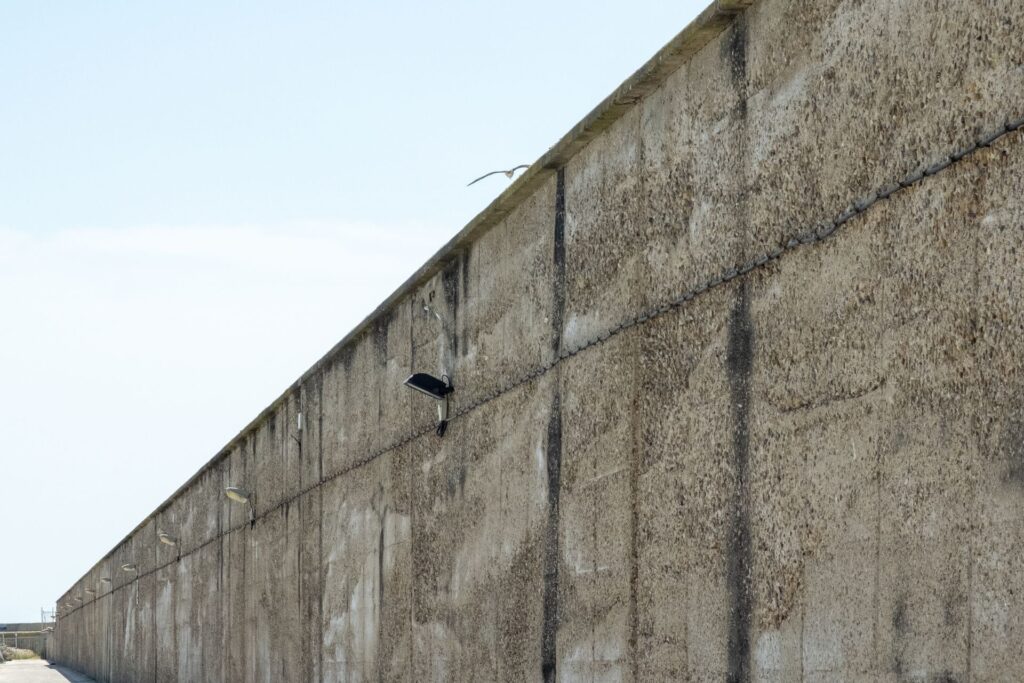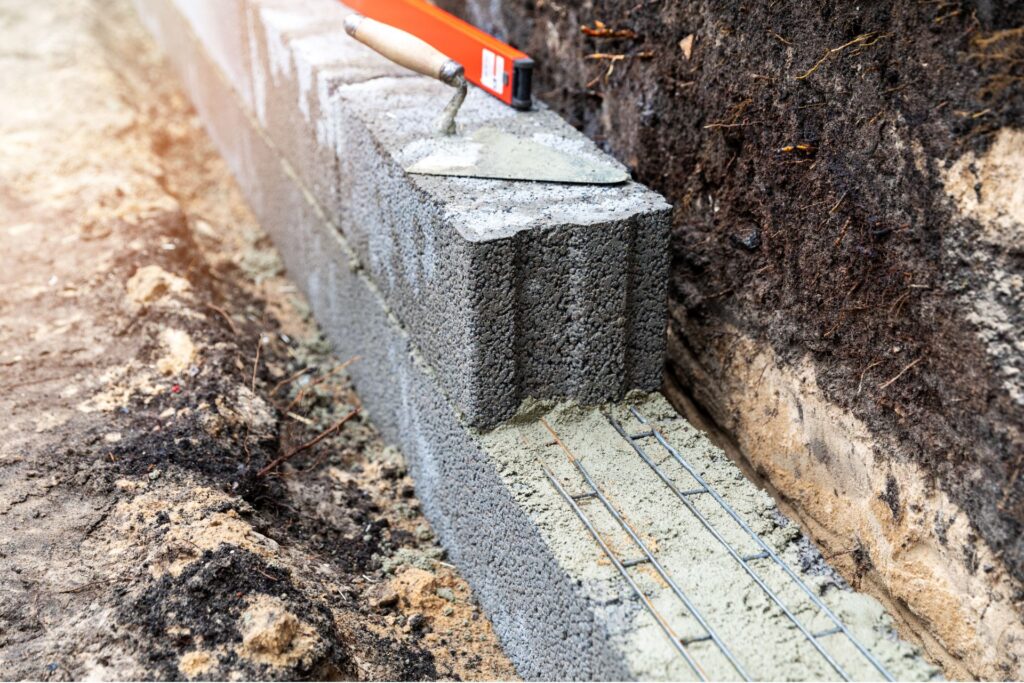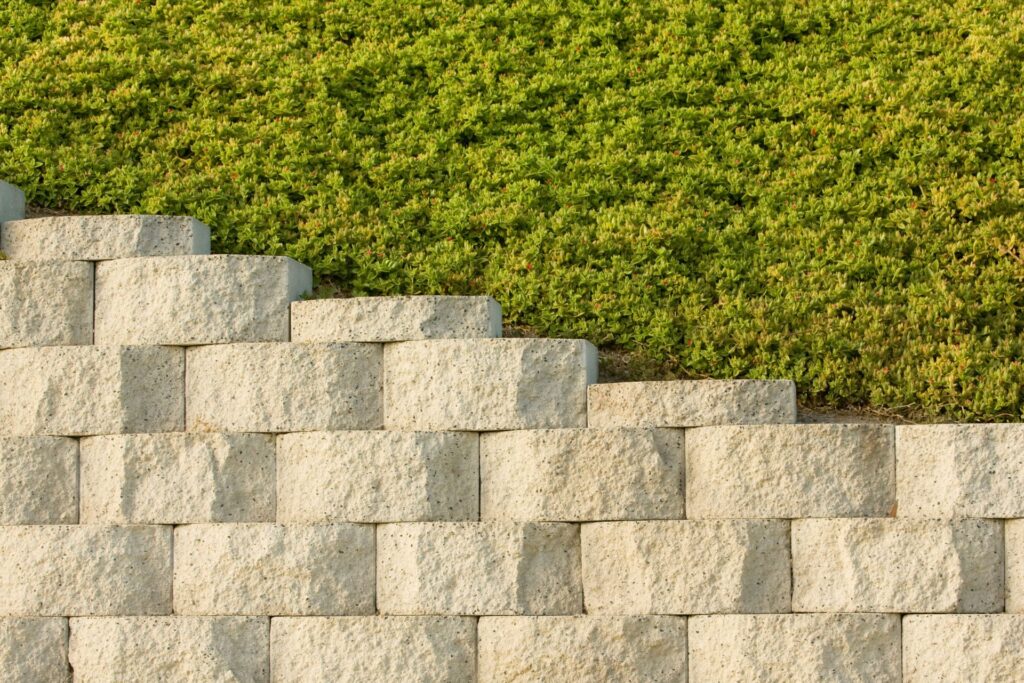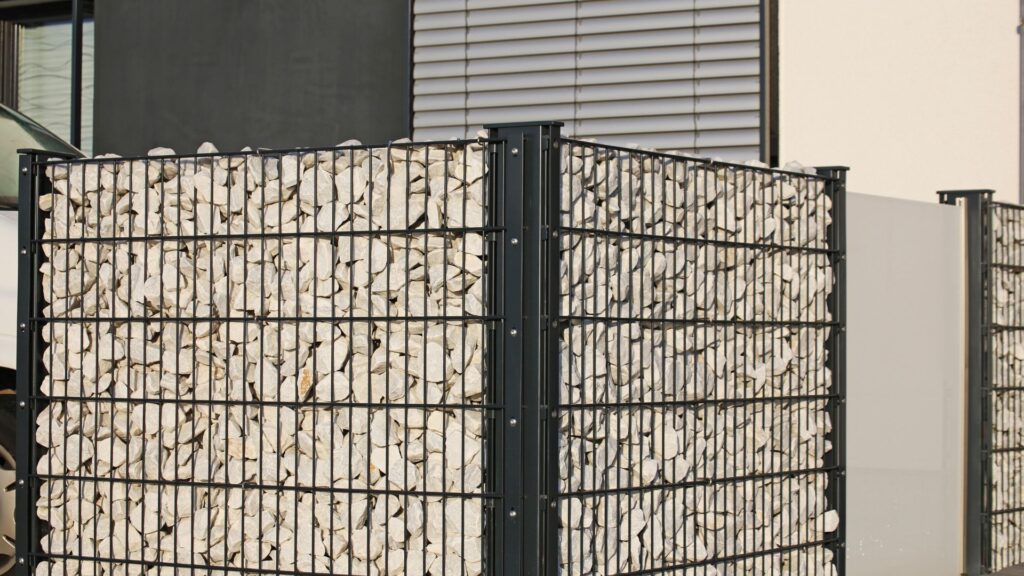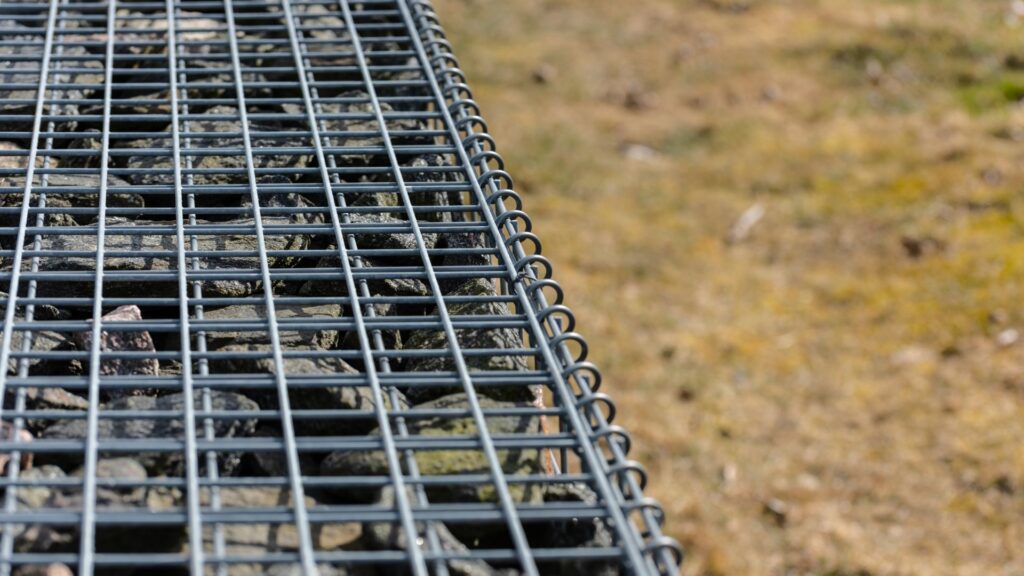Welcome to our comprehensive guide on what factors need to be considered when designing a retaining wall. Retaining walls plays a crucial role in preventing soil erosion, creating flat and usable spaces in sloped areas, and enhancing the overall aesthetics of landscapes. However, designing an effective and durable retaining wall requires careful consideration of various factors, including site conditions, wall height, material selection, structural integrity, and drainage solutions. In this guide, we will walk you through each of these essential elements, helping you understand how to plan and design a retaining wall that not only meets your needs but also stands the test of time.
When designing a retaining wall, several key factors must be considered to ensure stability and durability. These include assessing site conditions such as soil type and slope, determining the appropriate wall height and length, choosing suitable materials, addressing drainage and water management, adhering to local building codes, and evaluating the need for structural reinforcement. Proper planning and professional guidance are crucial to create a safe and effective retaining wall.
- Understanding The Purpose Of The Retaining Wall
- Assessing The Site Conditions
- Determining The Wall Height And Length
- Choosing The Right Materials For Your Retaining Wall
- Structural Engineering Considerations
- Addressing Drainage And Water Management
- Understanding Local Building Codes And Regulations
- Cost Estimation And Budgeting
- Safety And Environmental Impact
- Hiring Professionals Vs. DIY
- FAQs: About What Factors Need To Be Considered When Designing A Retaining Wall
- Conclusion
- Find A Professional Retaining Wall Company Near You!
Understanding The Purpose Of The Retaining Wall
Retaining walls are versatile structures that serve various essential functions in landscaping and construction. To fully appreciate their value, it’s important to understand their primary purposes and the types of retaining walls available based on these purposes.
Define the Primary Purpose
Soil Retention
One of the most common reasons for constructing a retaining wall is to retain soil. This is especially critical in areas with steep slopes or where land grading is required. Retaining walls helps prevent soil erosion, landslides, and runoff, ensuring the stability of the terrain. By holding back soil, these walls make land more manageable and safer for building and gardening.
Aesthetic Enhancement
Retaining walls can significantly enhance the visual appeal of a property. They can be designed to complement the architectural style of a house or garden, adding texture, depth, and a sense of order. By incorporating elements like plants, lighting, and stonework, retaining walls transform ordinary landscapes into eye-catching features.
Creating Usable Space
In hilly or uneven areas, retaining walls create flat, usable spaces. They can carve out terraces for gardens, patios, or even driveways, making previously unusable land functional. This is particularly beneficial in urban settings where space is limited and maximizing every square meter is crucial.
Different Types of Retaining Walls Based on Their Purpose
Gravity Walls
Gravity walls rely on their own weight to hold back soil. These walls are typically constructed from heavy materials like stone, concrete, or brick. Their mass and durability make them ideal for supporting large volumes of earth. Gravity walls are often used in residential settings for garden terraces and decorative purposes due to their robust appearance and ability to blend with natural surroundings.
Cantilever Walls
Cantilever walls are designed with reinforced concrete and have an L-shaped structure. The base of the L extends under the soil, providing additional stability by leveraging the weight of the soil itself. These walls are suitable for taller structures that require substantial support without taking up too much space. Cantilever walls are commonly used in commercial projects and along highways where space efficiency and strength are paramount.
Anchored Walls
Anchored walls incorporate cables or other stays anchored in the rock or soil behind the wall. These anchors provide extra support, making anchored walls an excellent choice for situations where space is constrained but high load-bearing capacity is needed. They are often utilized in places with loose, unstable soil, such as coastal areas or near water bodies.
Each type of retaining wall serves a specific function and is chosen based on the unique requirements of the project. Understanding these purposes and types helps in selecting the right retaining wall to achieve both practical and aesthetic goals, ensuring a balanced and stable landscape.
By defining the primary purposes and discussing the various types, we can see how retaining walls are crucial elements in both residential and commercial landscaping. They not only provide essential support and stability but also enhance the usability and beauty of outdoor spaces.

Assessing The Site Conditions
Soil Type
Understanding the type of soil where you plan to build your retaining wall is critical to its design and stability. Different soil types, such as clay, sand, and silt, each have unique properties that can significantly affect the construction process.
- Clay: Clay soils are dense and can retain water, making them heavy and prone to swelling and shrinking with moisture changes. This characteristic can exert additional pressure on retaining walls, necessitating robust design considerations to prevent wall failure. Clay’s low permeability means that water can accumulate behind the wall if proper drainage isn’t installed, further increasing the pressure.
- Sand: Sandy soils, on the other hand, have high permeability, allowing water to drain quickly. While this reduces the risk of water pressure build-up, sandy soils lack cohesion, which can lead to erosion issues. When designing retaining walls on sandy soils, it’s crucial to incorporate features that prevent soil erosion and ensure that the wall can handle the potential for soil movement.
- Silt: Silt soils are intermediate in terms of drainage and stability. They hold water better than sand but drain faster than clay. Silt can be challenging because it can become compacted when wet and loose when dry, leading to inconsistent pressure on the retaining wall. Proper drainage systems and possibly soil stabilization techniques are necessary to manage these fluctuations.
Slope of the Land
The slope of the land where the retaining wall will be built is another essential factor in the design process. The steepness and angle of the slope directly impact the forces acting on the wall.
- Importance of Slope Analysis: Analyzing the slope helps determine the required height and reinforcement for the retaining wall. Steeper slopes exert more lateral pressure on the wall, demanding more robust construction materials and techniques. A detailed slope analysis can reveal potential stability issues that need to be addressed before construction begins.
- Impact on Wall Design: For slopes that are particularly steep, terracing might be a better solution than a single tall retaining wall. This approach distributes the load more evenly and reduces the pressure on any one section of the wall. Additionally, understanding the slope allows for the design of retaining walls that can effectively manage the downhill movement of soil and water.
Drainage and Water Flow
Effective water management is crucial in retaining wall design. Improper drainage can lead to water accumulation behind the wall, creating hydrostatic pressure that can cause the wall to fail.
- Water Management: Installing proper drainage systems, such as weep holes, drainage pipes, and gravel backfill, ensures that water does not build up behind the wall. These systems allow water to escape, reducing the pressure on the wall. Without adequate drainage, water can saturate the soil, increasing its weight and the lateral forces acting on the retaining wall.
- Preventing Wall Failure: In areas with high water flow or where water runoff is a concern, it is vital to design retaining walls that can handle these conditions. Incorporating features like French drains or dry wells can help manage water flow and prevent the weakening of the soil structure. Regular maintenance of the drainage systems is also essential to ensure they remain effective over time.
In conclusion, assessing the site conditions, including soil type, slope of the land, and drainage, is fundamental to designing a stable and durable retaining wall. Each of these factors plays a critical role in determining the appropriate construction techniques and materials, ensuring that the retaining wall can withstand environmental pressures and remain effective over the long term.
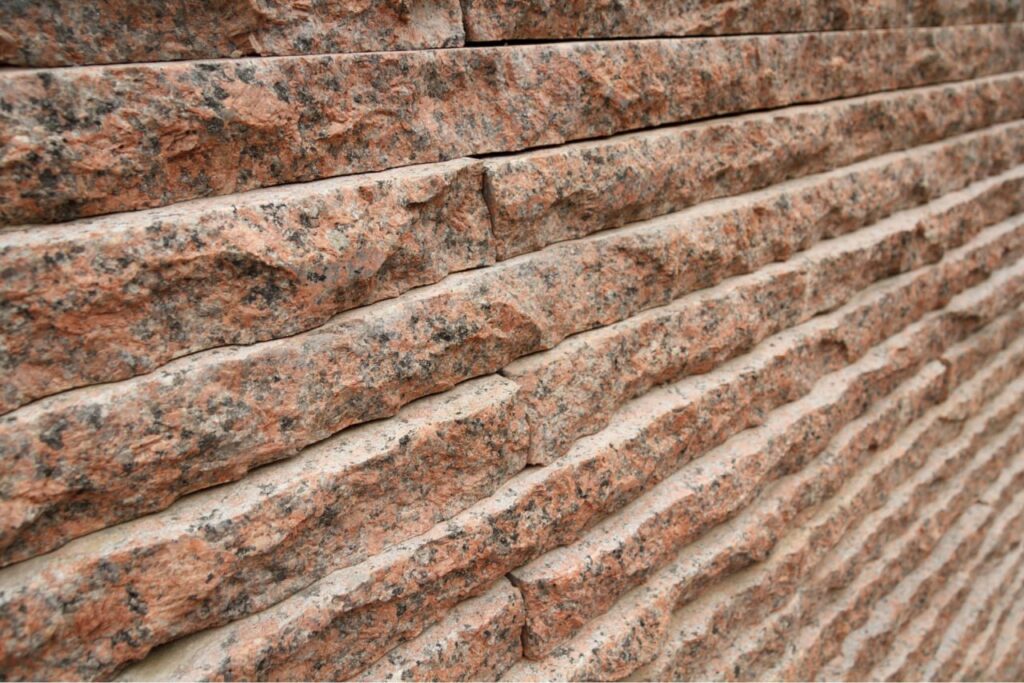
Determining The Wall Height And Length
When it comes to planning a retaining wall, one of the most critical steps is determining the appropriate height and length. These dimensions will significantly impact both the design complexity and the structural integrity of the wall. Let’s delve into the details of each aspect:
Height Considerations
The height of your retaining wall is a fundamental factor that influences its overall design and structural requirements. Here’s why height matters:
1. Structural Stability
- The taller the wall, the more pressure it must withstand from the soil it retains. This means taller walls require more robust engineering solutions to prevent failure. Reinforcements such as geogrids, tie-backs, or additional layers of concrete may be necessary.
- As the height increases, so does the risk of lateral earth pressure. Therefore, proper drainage behind the wall becomes crucial to alleviate hydrostatic pressure.
2. Design Complexity
- Taller walls often necessitate more complex design features. For instance, terracing (building multiple shorter walls instead of one tall one) can be an effective strategy to manage height without overwhelming the structure. This not only enhances stability but also adds aesthetic value to the landscape.
- Local building codes and regulations frequently impose height limits for retaining walls. Walls exceeding these limits might require special permits or even professional engineering oversight.
3. Aesthetic and Environmental Impact
- Height impacts the visual presence of the wall within the landscape. A wall that’s too tall can dominate a space and may not blend well with the surrounding environment.
- Consider the environmental impact of a tall wall. It might affect natural light, airflow, and the root systems of nearby plants.
Length Requirements
Determining the appropriate length of your retaining wall involves several key considerations related to the site and its intended purpose:
1. Site Analysis
- Conduct a thorough site analysis to understand the topography and soil conditions. The length of the wall should align with the contours of the land. This helps in achieving an effective and efficient design that minimizes unnecessary excavation or backfill.
- Identify potential obstacles or features that might affect the wall’s placement, such as existing structures, trees, or underground utilities.
2. Purpose and Functionality
- The length of the retaining wall should cater to its primary function. For example, if the wall is meant to create a level area for a garden or patio, ensure it spans the entire width of the intended space.
- Consider future needs. Will the wall need to extend further as landscaping projects evolve? Planning for potential extensions can save time and resources in the long run.
3. Material and Cost Implications
- Longer walls require more materials and labor, impacting the overall cost of the project. Ensure that your budget can accommodate the length you have in mind.
- Different materials have varying cost implications. For example, natural stone might be more expensive but offers durability and a timeless aesthetic, while treated timber could be more budget-friendly but may require more frequent maintenance.
4. Drainage and Erosion Control
- The length of the wall can affect water flow and drainage patterns on your property. Incorporate proper drainage solutions to manage water behind the wall and prevent erosion at the base.
- Extended walls might need segmented drainage systems or weep holes spaced appropriately to ensure water doesn’t accumulate behind the structure.
By carefully considering the height and length of your retaining wall, you can ensure a design that is both structurally sound and visually appealing. These dimensions play a crucial role in the wall’s functionality, cost, and long-term performance, making them essential factors in the planning process. Always consult with a professional engineer or contractor to confirm that your wall meets all local building codes and standards, ensuring a safe and lasting addition to your landscape.
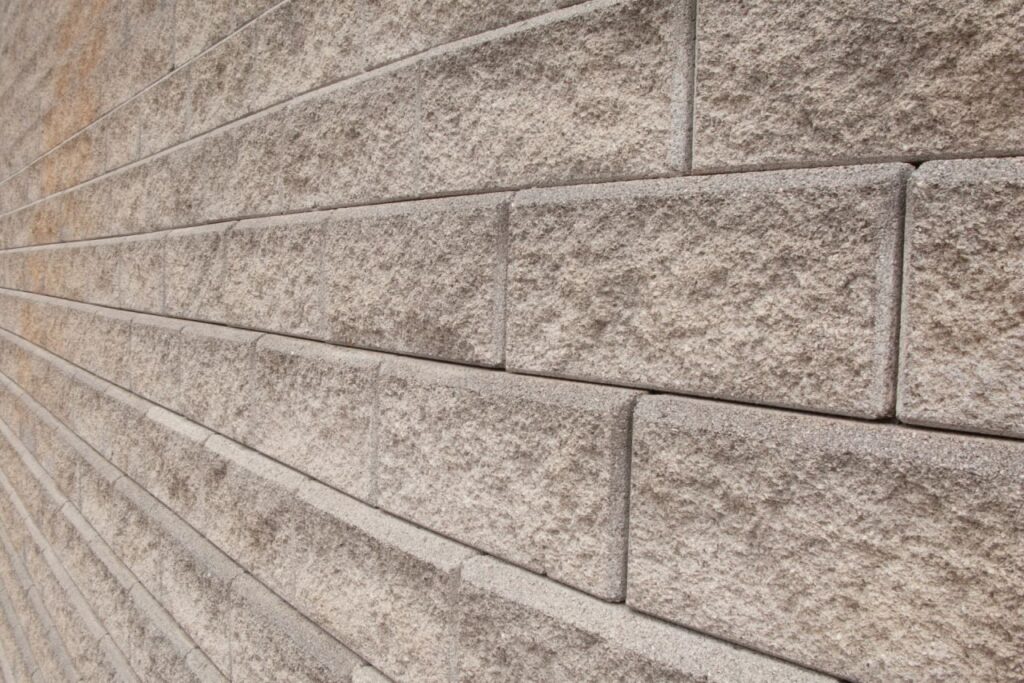
Choosing The Right Materials For Your Retaining Wall
Selecting the appropriate materials for your retaining wall is crucial for ensuring both functionality and aesthetic appeal. In this section, we’ll delve into the common material options available, discuss their durability and maintenance needs, and explore how to choose materials that harmonize with your landscape.
Material Options
When it comes to building retaining walls, several materials are commonly used, each with its unique benefits and considerations. Here are some popular choices:
1. Concrete: Concrete is a versatile and robust material often used for retaining walls. It can be poured into various shapes and sizes, allowing for great flexibility in design. Precast concrete blocks are also available, providing a quicker and often more economical option.
2. Stone: Natural stone offers a timeless and elegant look, making it a favorite for many homeowners. Stones like granite, limestone, and sandstone are durable and can be arranged in different patterns to create a custom appearance.
3. Timber: Timber retaining walls provide a rustic and natural look, blending seamlessly into many landscapes. Treated timber is essential to prevent rot and extend the wall’s lifespan.
4. Gabion: Gabion walls are made of wire mesh filled with rocks or other materials. They offer a unique, industrial look and are highly effective for erosion control.
Durability and Maintenance
Understanding the durability and maintenance requirements of each material is key to making an informed decision.
- Concrete: Concrete walls are known for their strength and longevity. They require minimal maintenance, but it’s essential to check for cracks periodically and address any drainage issues to prevent water damage.
- Stone: Stone walls are extremely durable and can last for decades with minimal maintenance. However, they may require occasional re-pointing or replacement of individual stones if they become loose.
- Timber: While timber walls can last many years, they do require more maintenance compared to stone or concrete. Regular treatment to prevent rot and insect damage is necessary, and the wood may need to be replaced periodically.
- Gabion: Gabion walls are highly durable and require little maintenance once installed. The wire mesh may need occasional inspection and repair to ensure it remains intact and secure.
Aesthetic Preferences
Choosing materials that complement the surrounding landscape is an essential aspect of designing your retaining wall. Here are some considerations to keep in mind:
- Concrete: For a modern and sleek look, concrete can be a great choice. It can be textured or stained to mimic other materials or to blend seamlessly with the environment.
- Stone: Stone walls offer a natural and classic appearance, ideal for traditional or rustic landscapes. The variety of stone types and colors available allows for customization to match existing features.
- Timber: Timber walls are perfect for creating a warm, earthy feel in your garden. They pair well with other natural elements like plants and water features.
- Gabion: Gabion walls provide a unique, contemporary look that works well in both industrial and natural settings. They can be filled with different materials to achieve the desired aesthetic.
By considering these factors—material options, durability and maintenance, and aesthetic preferences—you can choose the right materials for your retaining wall that not only meet your functional needs but also enhance the beauty of your landscape.
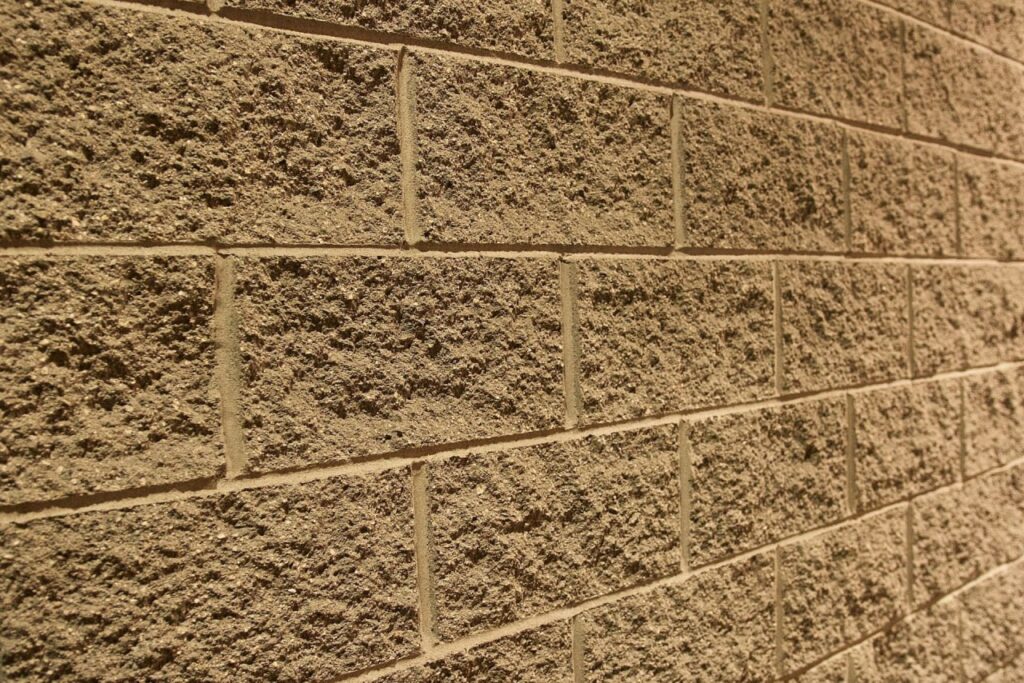
Structural Engineering Considerations
When planning and constructing retaining walls, structural engineering considerations are crucial to ensure the wall’s longevity, safety, and functionality. Here, we will delve into three key aspects: load-bearing capacity, reinforcement needs, and foundation design. Understanding these components will provide a solid foundation for constructing durable and reliable retaining walls.
Load-Bearing Capacity
One of the most critical aspects of designing a retaining wall is calculating its load-bearing capacity. This involves determining the amount of weight the wall needs to support, which can include the soil behind it, water pressure, and any additional structures like buildings or vehicles. Misjudging the load-bearing capacity can lead to structural failure, resulting in costly repairs or even dangerous collapses.
To accurately assess the load-bearing capacity, engineers conduct a thorough analysis of the soil type, its moisture content, and the slope of the land. Sandy soils, for example, have different load-bearing characteristics compared to clayey soils. Additionally, the presence of groundwater can significantly affect the pressure exerted on the wall. By considering these factors, engineers can design a wall that can handle the expected loads without compromising safety.
Reinforcement Needs
Reinforcement plays a vital role in enhancing the strength and stability of retaining walls, particularly when dealing with higher loads or challenging soil conditions. The use of steel bars or geogrids is common practice to provide additional support and prevent the wall from bowing or cracking under pressure.
The decision to incorporate reinforcement depends on several factors, including the wall’s height, the type of materials used, and the nature of the load it will bear. For taller walls or those retaining water-saturated soils, reinforcement becomes essential. Steel bars are often placed vertically and horizontally within the wall structure to distribute loads evenly and improve tensile strength. Geogrids, made from polymer materials, are also used to reinforce the soil, providing added stability and preventing erosion.
Foundation Design
A strong and stable foundation is the bedrock of any successful retaining wall. The foundation must be meticulously designed to support the weight of the wall and the loads it will bear. Without a solid foundation, the entire structure is at risk of shifting, settling, or collapsing.
To ensure foundation stability, engineers consider factors such as soil type, frost depth, and drainage. The foundation typically consists of a footing, which is a wider base that distributes the load over a larger area. The depth and width of the footing are determined by the soil’s bearing capacity and the expected loads. In areas prone to frost, the foundation must extend below the frost line to prevent heaving during freeze-thaw cycles.
Proper drainage is another critical aspect of foundation design. Without adequate drainage, water can accumulate behind the wall, increasing pressure and potentially leading to failure. Engineers often incorporate drainage pipes or weep holes into the foundation design to allow water to escape, thereby reducing hydrostatic pressure and maintaining the wall’s stability.
In conclusion, understanding the structural engineering considerations of load-bearing capacity, reinforcement needs, and foundation design is essential for constructing reliable retaining walls. By carefully calculating loads, incorporating necessary reinforcements, and ensuring a stable foundation, you can create retaining walls that stand the test of time, providing both functionality and safety for years to come.

Addressing Drainage And Water Management
When it comes to retaining walls, one of the most critical factors to consider is how to manage water. Proper drainage and water management are essential to maintaining the structural integrity and longevity of the wall. Let’s dive into the key aspects of this important topic.
Drainage Systems
Types of Drainage Solutions
1. Weeping Holes
Weeping holes, also known as weep holes, are small openings typically placed at the base of a retaining wall. These holes allow water to escape from behind the wall, preventing the buildup of hydrostatic pressure. By providing an outlet for trapped water, weeping holes reduce the risk of water-related damage and help to maintain the stability of the wall.
2. Drainage Pipes
Another effective drainage solution is the installation of drainage pipes. These pipes are usually perforated and placed at the base or behind the retaining wall. They collect and channel water away from the wall, ensuring that it doesn’t accumulate and exert pressure on the structure. Drainage pipes are often connected to a proper outlet where the water can be safely discharged.
3. Geotextiles
Geotextiles are permeable fabrics used in conjunction with other drainage solutions to enhance water management. These materials are placed behind the retaining wall and act as a filter, allowing water to pass through while preventing soil particles from clogging the drainage system. Geotextiles improve the efficiency of drainage pipes and weeping holes, ensuring that water is effectively managed.
Preventing Hydrostatic Pressure
How to Design the Wall to Manage Water Pressure Behind It
Hydrostatic pressure is the force exerted by water against a structure. If not properly managed, this pressure can cause significant damage to a retaining wall, leading to cracks, bulges, or even failure. Here’s how to design a retaining wall to effectively manage hydrostatic pressure:
Proper Wall Angle
The angle of the retaining wall can influence how water pressure is managed. A slightly inclined wall allows water to flow down and away from the structure, reducing the buildup of pressure. This design consideration helps to ensure that water doesn’t accumulate directly behind the wall.
Incorporate a Backfill System
The material used to backfill the area behind the retaining wall plays a crucial role in drainage. Coarse, granular materials such as gravel or crushed stone are ideal because they allow water to flow freely through the backfill and into the drainage system. This reduces the amount of water that can build up behind the wall and exert pressure.
Use of Retaining Wall Footings
Footings provide a stable base for the retaining wall and can help to manage water pressure. When designed with a proper drainage system, footings can prevent water from pooling at the base of the wall. This structural component ensures that the wall remains stable and that water is effectively directed away from the wall.
Waterproof Membrane Application
Applying a waterproof membrane to the back of the retaining wall can further enhance water management. This membrane acts as a barrier, preventing water from seeping into the wall structure. Combined with effective drainage solutions, a waterproof membrane helps to mitigate the risks associated with hydrostatic pressure.
By implementing these strategies, you can effectively manage drainage and water pressure, ensuring the durability and stability of your retaining wall. Proper water management not only extends the life of the wall but also prevents costly repairs and potential failures. Whether you’re building a new retaining wall or maintaining an existing one, addressing drainage and water management is a key aspect of successful wall design.

Understanding Local Building Codes And Regulations
Navigating the complex world of local building codes and regulations is essential for any construction project. These guidelines ensure the safety, sustainability, and legal compliance of your building efforts. Here, we’ll break down the critical aspects you need to understand, focusing on permits and approvals, as well as environmental considerations.
Permits and Approvals
Securing the necessary permits and approvals is one of the first steps in any construction project. These permits are issued by local government authorities and are mandatory for ensuring that your project complies with local building codes.
Why Permits Are Necessary
1. Safety Compliance: Building codes are designed to ensure that structures are safe and habitable. They cover everything from the strength of the foundation to the electrical wiring and plumbing systems. By obtaining the appropriate permits, you confirm that your project meets these stringent safety standards.
2. Legal Requirements: Failure to secure the necessary permits can result in legal consequences, including fines or orders to halt construction. In some cases, you might even be required to dismantle completed work. Thus, adhering to local building codes and obtaining the required permits can save you from legal headaches and financial penalties.
3. Insurance Coverage: Many insurance companies require proof of permits and inspections before providing coverage. Without proper documentation, you might face difficulties in getting insurance claims approved if any damage occurs.
How to Obtain Permits
- Submit Detailed Plans: You need to submit comprehensive plans of your project to the local building authority. These plans should include architectural drawings, engineering reports, and other relevant documents.
- Undergo Inspections: Throughout the construction process, your project will be subject to various inspections to ensure compliance with building codes. Passing these inspections is crucial for moving forward with your project.
Environmental Considerations
Building codes also encompass regulations aimed at minimizing the environmental impact of construction projects. With increasing awareness of environmental issues, sustainability has become a significant focus in the construction industry.
Key Environmental Regulations
1. Sustainable Building Practices: Many local building codes now include requirements for sustainable building practices. This can involve using eco-friendly materials, implementing energy-efficient systems, and designing buildings to reduce waste and conserve resources.
2. Environmental Impact Assessments: Before starting construction, you may be required to conduct an environmental impact assessment (EIA). This assessment evaluates how your project will affect the surrounding environment and identifies measures to mitigate any negative impacts.
3. Waste Management: Proper disposal of construction waste is another critical area regulated by building codes. Regulations often specify how to handle hazardous materials and ensure that waste is disposed of in an environmentally friendly manner.
4. Water and Energy Efficiency: Building codes may include standards for water and energy efficiency. This can involve installing low-flow fixtures, energy-efficient windows, and incorporating renewable energy sources like solar panels.
Benefits of Adhering to Environmental Regulations
- Reduced Environmental Footprint: By following these regulations, you contribute to reducing the overall environmental impact of your construction project.
- Cost Savings: Implementing energy-efficient and sustainable practices can lead to long-term cost savings. For example, using energy-efficient appliances and insulation can significantly reduce utility bills.
- Community Support: Projects that demonstrate a commitment to sustainability often receive more support from the community and stakeholders. This can enhance your reputation and foster positive relationships with local residents and authorities.
In conclusion, understanding and adhering to local building codes and regulations is crucial for the success of any construction project. By securing the necessary permits and approvals and considering environmental regulations, you ensure that your project is safe, legal, and environmentally responsible. Taking these steps not only helps you avoid potential pitfalls but also contributes to the long-term sustainability and success of your construction endeavors.
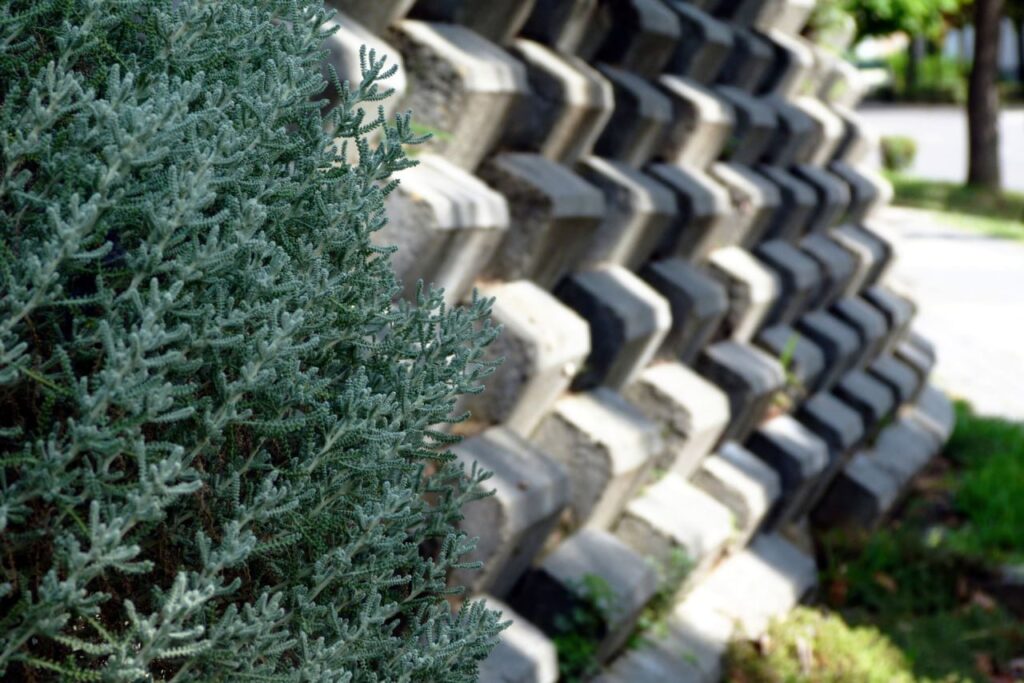
Cost Estimation And Budgeting
Estimating the cost of building a retaining wall can be a daunting task, but breaking it down into key components makes it more manageable. Here’s a detailed look at the costs involved:
Material Costs
The first major expense in constructing a retaining wall is the cost of materials. The type of material you choose will significantly influence the overall cost. Common materials for retaining walls include concrete blocks, natural stone, timber, and gabion baskets.
1. Concrete Blocks: These are a popular choice due to their durability and versatility. Concrete blocks can range in price from $15 to $30 per block, depending on the size and quality. For a medium-sized wall, you might need around 100 to 200 blocks, translating to a total cost of $1,500 to $6,000.
2. Natural Stone: Stone walls offer a timeless, aesthetically pleasing look but come at a higher cost. Prices can vary widely based on the type of stone, but generally, you can expect to pay between $50 and $100 per square meter. A wall requiring 20 square meters of stone could cost between $1,000 and $2,000 for materials alone.
3. Timber: Timber walls are relatively affordable and easy to install. The cost of treated pine timber ranges from $5 to $15 per linear meter. For a 10-meter-long wall, the timber cost might be between $50 and $150.
4. Gabion Baskets: These are metal cages filled with rocks or stones. They are both functional and stylish, with prices averaging $30 to $50 per cubic meter. Depending on the size of your wall, the cost for gabion baskets can range from $300 to $1,000.
Labor and Construction Costs
Labor costs can vary significantly depending on the complexity of the wall and the rates of local contractors. It’s important to get multiple quotes to ensure you’re getting a fair price.
1. Labor Expenses: Skilled labor is essential for ensuring the retaining wall is structurally sound and meets local building codes. Hourly rates for professional labor in New Zealand can range from $50 to $100. For a project expected to take 50 hours, labor costs could range from $2,500 to $5,000.
2. Contractor Fees: In addition to hourly labor costs, contractors may charge a flat fee for the project, which can vary based on the project’s scope and complexity. Contractor fees typically range from $1,000 to $5,000. This fee often includes project management, obtaining necessary permits, and ensuring compliance with regulations.
Maintenance Costs
Once your retaining wall is built, ongoing maintenance is crucial to ensure its longevity and functionality. Maintenance costs can vary depending on the material used and the local environment.
1. Routine Inspections: Regular inspections help identify and address minor issues before they become major problems. Annual inspections by a professional might cost between $100 and $300.
2. Repairs and Replacements: Over time, wear and tear can lead to necessary repairs. For example, replacing a few damaged concrete blocks might cost around $200 to $500, while more extensive repairs could reach $1,000 or more.
3. Cleaning and Sealing: Depending on the material, periodic cleaning and sealing might be necessary to protect the wall from the elements. For stone and concrete walls, sealing can cost around $2 to $5 per square meter, amounting to $100 to $250 for a 50-square-meter wall.
4. Vegetation Management: If your retaining wall is integrated into a landscaped area, managing vegetation can add to maintenance costs. Hiring a gardener or landscaper to trim plants and remove weeds might cost around $50 to $100 per visit.
Final Thoughts
When planning your retaining wall project, it’s essential to consider all these factors to develop an accurate budget. Material choice, labor expenses, and ongoing maintenance are the primary cost drivers. By thoroughly researching and obtaining multiple quotes, you can ensure your retaining wall is both functional and cost-effective. Remember, investing in quality materials and skilled labor will pay off in the long run, providing you with a durable and attractive retaining wall that enhances your property’s value.
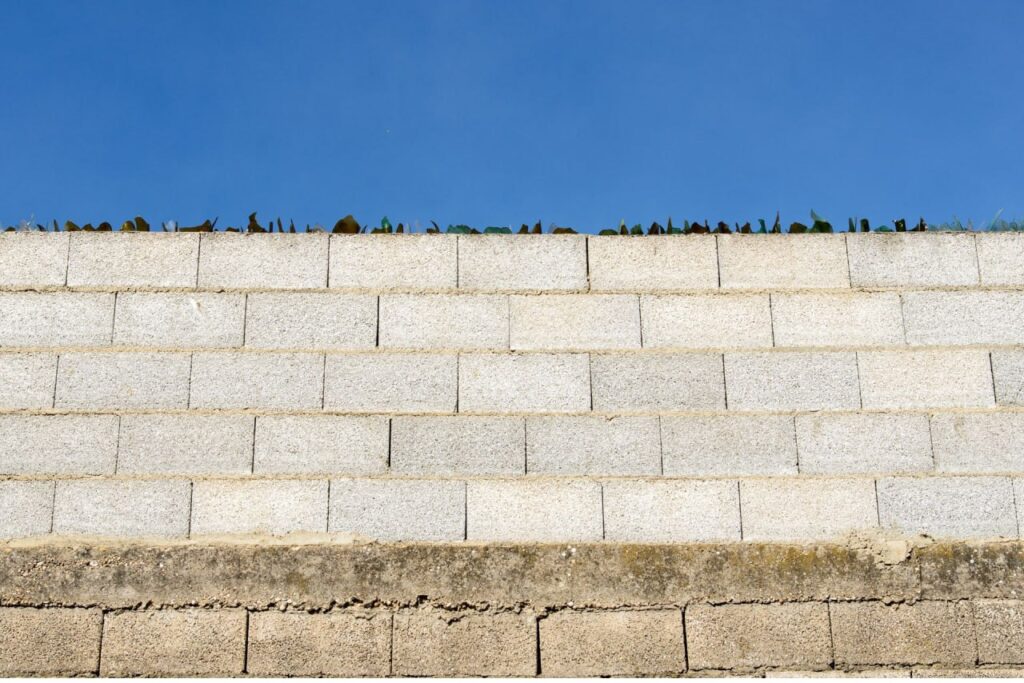
Safety And Environmental Impact
Safety Measures
When it comes to construction, safety is paramount. It’s essential to design and execute projects with safety as the top priority. This involves taking comprehensive measures to protect both the workers during the construction phase and the end-users who will utilize the finished structure. Here’s how safety can be prioritized:
1. Planning and Risk Assessment: Before any construction begins, a detailed risk assessment should be conducted. This involves identifying potential hazards and implementing strategies to mitigate them. It’s crucial to consider every aspect of the project, from the initial excavation to the final touches, ensuring that safety protocols are in place at each stage.
2. Training and Compliance: Workers should be thoroughly trained in safety practices and emergency procedures. Regular safety drills and updates on new safety regulations are vital. Compliance with local and international safety standards ensures that the project adheres to the highest safety norms.
3. Use of Protective Gear: Ensuring that all personnel are equipped with appropriate protective gear, such as helmets, gloves, safety glasses, and high-visibility clothing, can significantly reduce the risk of accidents.
4. Structural Safety: The design itself should incorporate safety features. This includes proper load-bearing calculations, the use of high-quality materials, and the integration of safety features like handrails, non-slip surfaces, and fire escapes.
5. Continuous Monitoring: During construction, continuous monitoring of safety conditions is essential. This involves regular site inspections, safety audits, and having a dedicated safety officer to oversee the implementation of safety measures.
Environmental Sustainability
In today’s world, considering the environmental impact of construction projects is not just an option; it’s a responsibility. Eco-friendly design options and materials are at the forefront of sustainable construction practices. Here’s how environmental sustainability can be integrated into construction projects:
1. Sustainable Materials: Using sustainable materials like recycled steel, bamboo, reclaimed wood, and eco-friendly concrete can significantly reduce the environmental footprint of a construction project. These materials often require less energy to produce and are recyclable, reducing the waste generated.
2. Energy Efficiency: Designing buildings that maximize energy efficiency is crucial. This can include the use of solar panels, energy-efficient windows and insulation, and smart building technologies that monitor and optimize energy use.
3. Water Conservation: Implementing water-saving technologies such as low-flow fixtures, rainwater harvesting systems, and greywater recycling can help conserve water, a vital resource.
4. Green Building Certifications: Pursuing certifications like LEED (Leadership in Energy and Environmental Design) can guide the construction process to meet high environmental standards. These certifications evaluate the environmental performance of a building and encourage sustainable practices.
5. Waste Reduction: Effective waste management strategies, such as recycling construction debris and minimizing on-site waste, play a significant role in reducing the environmental impact. Planning for waste reduction from the outset can make the process more efficient.
6. Biodiversity Preservation: Ensuring that the construction site’s biodiversity is preserved as much as possible is another critical aspect of environmental sustainability. This can involve protecting existing trees, creating green spaces, and incorporating landscaping that supports local wildlife.
By focusing on safety and environmental sustainability, construction projects can achieve a balance between functionality, safety, and eco-friendliness. Prioritizing these aspects not only ensures compliance with regulations and standards but also contributes to a healthier planet and safer, more durable structures.
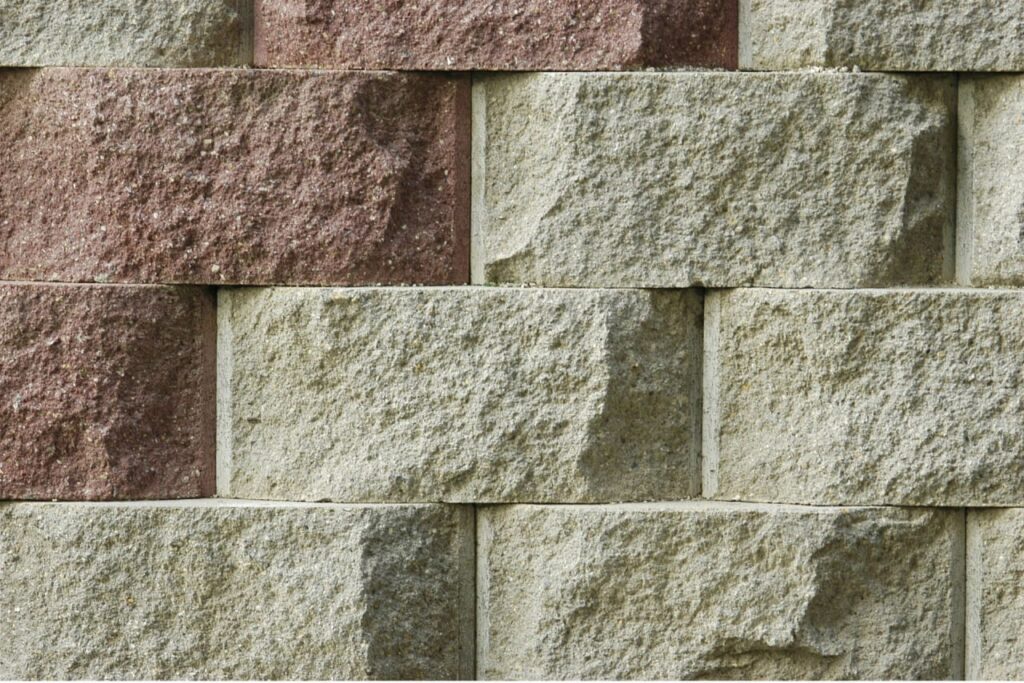
Hiring Professionals Vs. DIY
When it comes to constructing a retaining wall, one of the biggest decisions you’ll face is whether to hire professionals or take on the project yourself. Each option has its own set of advantages and considerations. Let’s dive into both to help you make an informed choice.
Professional Services: Benefits of Hiring Engineers and Contractors for Complex Designs
Opting for professional services to build your retaining wall can offer a plethora of benefits, especially for complex designs. Here are some compelling reasons to consider hiring engineers and contractors:
1. Expertise and Experience
Professional engineers and contractors bring a wealth of knowledge and experience to the table. They understand the intricacies of soil types, drainage systems, and the structural requirements needed to ensure your retaining wall is both functional and durable.
2. Design Precision
Professionals can provide precise and custom designs tailored to your specific landscape. They use advanced tools and software to create plans that maximize space and aesthetic appeal while ensuring the structural integrity of the wall.
3. Quality Materials
Contractors have access to high-quality materials that may not be readily available to the general public. They also know which materials are best suited for your specific project, ensuring longevity and durability.
4. Time and Efficiency
Building a retaining wall is a time-consuming process. Professionals can complete the job more efficiently, often in a fraction of the time it would take an amateur. This allows you to enjoy your new wall sooner and minimizes disruption to your daily routine.
5. Safety
Safety is paramount in construction projects. Professionals adhere to strict safety standards and regulations, reducing the risk of accidents and ensuring the project is completed safely.
6. Permits and Regulations
Depending on your location, building a retaining wall may require permits and must comply with local regulations. Professional contractors are familiar with these requirements and can handle the paperwork and inspections, saving you the hassle.
7. Warranties and Guarantees
Many professional services offer warranties on their work, giving you peace of mind. If any issues arise post-construction, they can be addressed without additional costs to you.
DIY Considerations: Tips for Those Considering Building a Retaining Wall Themselves
If you’re leaning towards a DIY approach, there are several important considerations to keep in mind to ensure your project is successful:
1. Assess Your Skills
Be honest about your skill level. Building a retaining wall requires a good understanding of construction principles and the ability to use various tools. If you’re a seasoned DIYer with relevant experience, you might find the project manageable.
2. Research Thoroughly
Educate yourself on the type of retaining wall you plan to build. There are different types, such as gravity walls, cantilevered walls, and anchored walls, each with specific construction methods and material requirements.
3. Plan and Design
Take the time to design your wall carefully. This includes measuring the area, calculating the amount of materials needed, and planning for drainage. Poor planning can lead to structural failure or water damage.
4. Choose the Right Materials
Select materials that are suitable for your wall type and local climate. For example, treated timber, natural stone, and concrete blocks are popular choices, each with its own pros and cons.
5. Safety First
Ensure you have the necessary safety gear and knowledge to prevent injuries. This includes wearing gloves, safety glasses, and sturdy footwear, and being cautious when handling heavy materials.
6. Understand Local Regulations
Check with your local building authority to see if you need a permit. Even small retaining walls might be subject to regulations, and non-compliance can result in fines or having to redo the work.
7. Drainage Solutions
Proper drainage is critical to prevent water buildup behind the wall, which can cause it to fail. Incorporate drainage solutions such as gravel backfill and drainage pipes into your design.
8. Consider the Costs
While DIY can be cost-effective, it’s important to factor in all costs, including materials, tools, and time. Unexpected expenses can add up, sometimes making professional services more economical in the long run.
In conclusion, deciding between hiring professionals and undertaking a DIY project for your retaining wall depends on various factors, including the complexity of the design, your skill level, and your budget. While professional services offer numerous benefits, a well-planned and executed DIY project can also yield satisfying results. Weigh the pros and cons carefully to make the best choice for your situation.
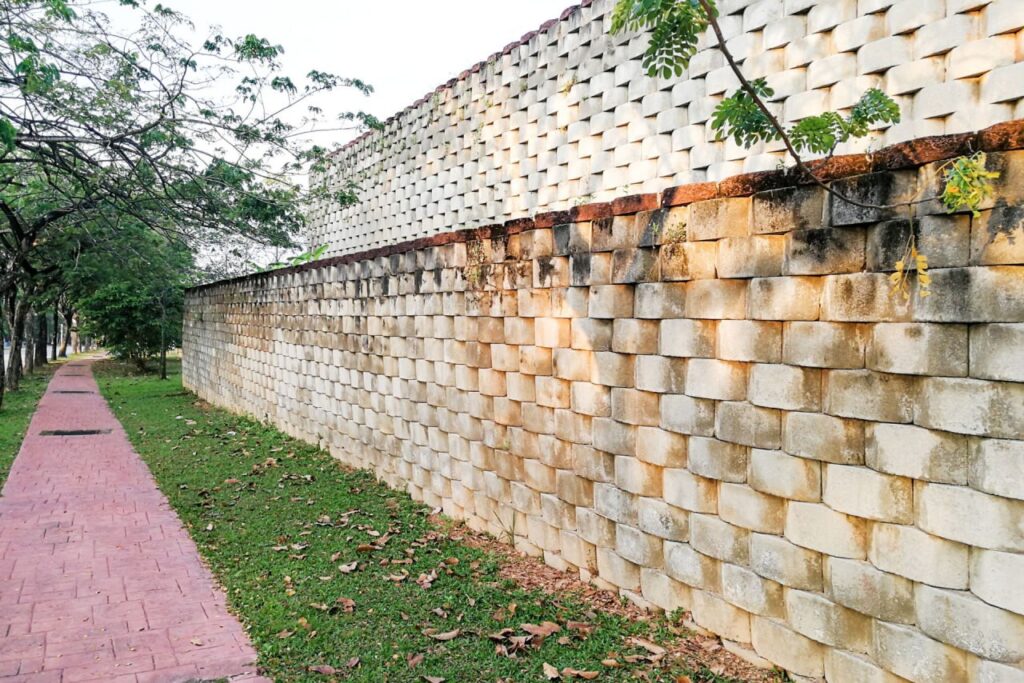
FAQs: About What Factors Need To Be Considered When Designing A Retaining Wall
Conclusion
In conclusion, designing a retaining wall involves several key factors that ensure its stability and longevity. It’s essential to consider the wall’s purpose, the type of soil, drainage options, materials, and local regulations. Thoughtful planning is crucial to address these aspects effectively, and seeking professional guidance can provide valuable insights and expertise. Whether you’re consulting with a professional or starting your design, taking the next step in your retaining wall project with a well-informed approach will lead to successful and sustainable results.
Find A Professional Retaining Wall Company Near You!
- Retaining Wall Builders Hastings
- Retaining Wall Builders Hawkes Bay
- Retaining Wall Builders Kapiti
- Retaining Wall Builders Levin
- Retaining Wall Builders Lower Hutt
- Retaining Wall Builders Manawatu
- Retaining Wall Builders Napier
- Retaining Wall Builders Palmerston North
- Retaining Wall Builders Porirua
- Retaining Wall Builders Upper Hutt
- Retaining Wall Builders Wellington
- Retaining Wall Installation Manawatu
- Retaining Walls Nelson
- Retaining Walls Tauranga
- Gabion and Timber Retaining Walls Kapiti
- Retaining Wall Builders Auckland
- Retaining Wall Builders Hamilton
- Retaining Wall Builders Tauranga
- Retaining Walls Christchurch
- Retaining Walls Kerikeri
- Retaining Walls Mangawhai
- Retaining Walls Paihia
- Retaining Walls Rotorua
- Retaining Walls Warkworth
About the Author:
Mike Veail is a recognized digital marketing expert with over 6 years of experience in helping tradespeople and small businesses thrive online. A former quantity surveyor, Mike combines deep industry knowledge with hands-on expertise in SEO and Google Ads. His marketing strategies are tailored to the specific needs of the trades sector, helping businesses increase visibility and generate more leads through proven, ethical methods.
Mike has successfully partnered with numerous companies, establishing a track record of delivering measurable results. His work has been featured across various platforms that showcase his expertise in lead generation and online marketing for the trades sector.
Learn more about Mike's experience and services at https://theleadguy.online or follow him on social media:


